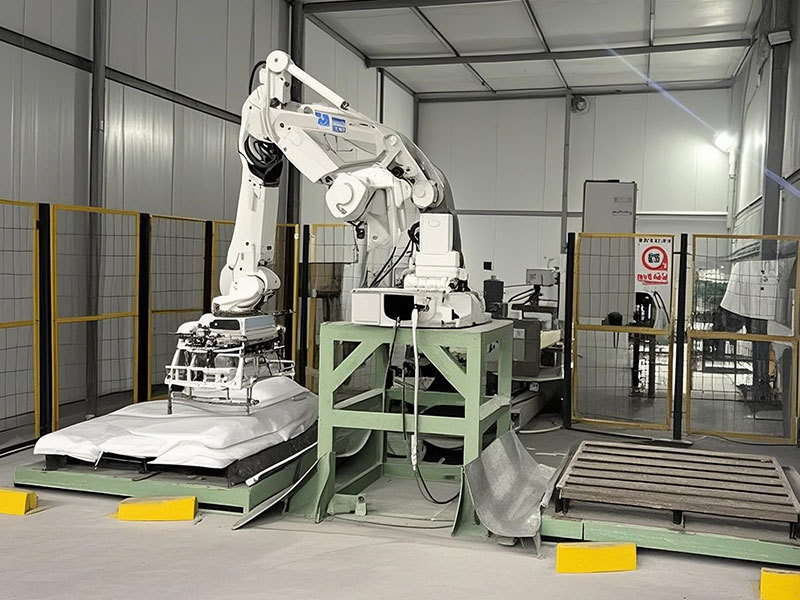The Future of Paint Dispersants: Innovations from Top Manufacturers
2025-06-22
The Future of Paint Dispersants: Innovations from Top Manufacturers
Table of Contents
1. Introduction to Paint Dispersants
2. Importance of Paint Dispersants in Coatings
3. Types of Paint Dispersants
4. Emerging Technologies in Paint Dispersants
5. Leading Manufacturers in Paint Dispersants
6. Sustainability in Paint Dispersants
7. Future Trends and Innovations
8.

The Future of Paint Dispersants: Innovations from Top Manufacturers
Table of Contents
- 1. Introduction to Paint Dispersants
- 2. Importance of Paint Dispersants in Coatings
- 3. Types of Paint Dispersants
- 4. Emerging Technologies in Paint Dispersants
- 5. Leading Manufacturers in Paint Dispersants
- 6. Sustainability in Paint Dispersants
- 7. Future Trends and Innovations
- 8. Conclusion
- 9. Frequently Asked Questions
1. Introduction to Paint Dispersants
Paint dispersants are crucial additives in the formulation of coatings and paints. They play a vital role in stabilizing pigments and fillers, ensuring uniformity and consistency in both application and performance. As the industry evolves, manufacturers are constantly seeking innovative solutions to enhance the functionality and environmental impact of these dispersants.
In recent years, there has been a significant shift towards developing more efficient, sustainable, and versatile paint dispersants. With the rise of eco-conscious consumerism and stringent regulatory measures, the need for innovation in this sector has never been more pressing.
2. Importance of Paint Dispersants in Coatings
Paint dispersants are integral to the quality and performance of paint products. They aid in the following ways:
2.1. Enhancing Pigment Dispersion
Effective dispersants ensure that pigments remain evenly distributed throughout the paint formulation. This improves color consistency and prevents issues such as sedimentation, where particles settle at the bottom.
2.2. Improving Viscosity and Flow
Dispersants help to adjust the viscosity of paint, providing the right flow characteristics for application. This ensures ease of use and a smooth finish, which are critical for professional painters and DIY enthusiasts alike.
2.3. Increasing Resistance to Environmental Factors
Modern paint dispersants contribute to the durability of coatings, enhancing their resistance to factors such as UV light, moisture, and chemicals. This durability is essential for maintaining the integrity and appearance of painted surfaces over time.
3. Types of Paint Dispersants
Understanding the different types of paint dispersants is essential for manufacturers and formulators. They can be categorized into two primary groups:
3.1. Anionic Dispersants
Anionic dispersants carry a negative charge. They are highly effective in stabilizing pigments, particularly in water-based systems. Their performance is influenced by the pH of the formulation, making them ideal for applications where pH control is feasible.
3.2. Nonionic Dispersants
Nonionic dispersants do not carry any charge and are less sensitive to changes in pH. They are often used in solvent-based systems and are valued for their broad compatibility with various pigments and additives.
4. Emerging Technologies in Paint Dispersants
Innovation in paint dispersants is being driven by advancements in technology. Here are some of the most promising developments:
4.1. Smart Dispersants
Smart dispersants are designed to adapt their properties based on environmental conditions. For instance, they may alter their viscosity in response to temperature changes, ensuring optimal performance in varying climates.
4.2. Biodegradable Dispersants
The demand for environmentally friendly products has led to the development of biodegradable paint dispersants. These products reduce the environmental impact of coatings while maintaining performance standards.
4.3. Nanotechnology in Dispersants
Nanotechnology enables the creation of dispersants that can stabilize nanoparticles more effectively. This can enhance the properties of paints, such as improved adhesion, corrosion resistance, and UV protection.
5. Leading Manufacturers in Paint Dispersants
Several manufacturers have established themselves as leaders in the production of innovative paint dispersants. Their contributions to the industry are noteworthy:
5.1. BASF
BASF is at the forefront of developing advanced dispersant technologies. Their product range includes a variety of dispersants tailored for different applications, focusing on sustainability and performance.
5.2. Evonik Industries
Evonik offers a unique portfolio of dispersants designed for high-performance coatings. Their commitment to innovation and sustainability is evident in their latest product offerings.
5.3. Clariant
Clariant specializes in sustainable solutions for the coatings industry. Their dispersants are engineered to enhance performance while minimizing environmental impact.
6. Sustainability in Paint Dispersants
Sustainability is a key focus for the future of paint dispersants. Manufacturers are increasingly adopting eco-friendly practices and developing biodegradable products.
6.1. The Shift to Green Chemistry
The principles of green chemistry promote the use of renewable resources and minimize hazardous substances. This shift is driving the development of eco-friendly dispersants that do not compromise on performance.
6.2. Life Cycle Assessment of Dispersants
Conducting life cycle assessments helps manufacturers understand the environmental impact of their products. Sustainable practices are being integrated from raw material sourcing through production and disposal.
7. Future Trends and Innovations
The future of paint dispersants is bright, with several trends shaping the landscape:
7.1. Increased Customization
Manufacturers are focusing on customizing dispersants to meet specific performance requirements for diverse applications. This trend is set to continue, allowing for tailored solutions for various industries.
7.2. Collaborative Research and Development
Industry collaboration is becoming more common, with manufacturers partnering with research institutions to develop next-generation dispersants. These partnerships are essential for driving innovation and addressing market needs.
7.3. Digital Transformation in Manufacturing
The adoption of digital technologies in manufacturing processes is enhancing efficiency and innovation. Data analytics and automation are streamlining the production of dispersants, leading to higher quality and lower costs.
8. Conclusion
The future of paint dispersants is poised for transformative changes, thanks to continuous innovation from leading manufacturers. As the industry shifts towards sustainability and performance, the emergence of advanced dispersants will play a crucial role in meeting market demands. By embracing new technologies and eco-friendly practices, manufacturers are ensuring that paint dispersants contribute positively to both product performance and environmental sustainability.
9. Frequently Asked Questions
What are paint dispersants?
Paint dispersants are additives used in paint formulations to stabilize pigments and improve the overall quality and performance of coatings.
Why are dispersants important in paint?
They ensure uniform pigment distribution, enhance viscosity, and increase the durability of the paint against environmental factors.
What are the different types of paint dispersants?
Paint dispersants can be categorized into anionic and nonionic types, each with distinct properties suited for various applications.
How are manufacturers innovating paint dispersants?
Manufacturers are utilizing emerging technologies such as smart dispersants, biodegradable options, and nanotechnology to enhance performance and sustainability.
What are some leading manufacturers of paint dispersants?
Top manufacturers include BASF, Evonik Industries, and Clariant, all of which are recognized for their innovative and sustainable product offerings.


 TESFA STPP
TESFA STPP